Many veterinary residency programs, where individuals get advanced training in a particular discipline, use and kill animals. The following list provides just a few examples of humane methods that could be used instead. If you are aware of other examples you believe to be important to include here, please send the information to HEVM for consideration.
New addition:
Real-Time Feedback to Enhance the Teaching of Wire Tying
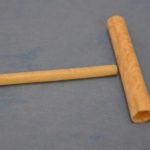 |
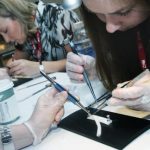 |
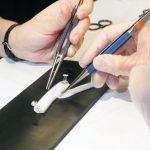 |
From Web site: The LifeLike BioTissue vascular anastomosis model feels, sutures and behaves like real live tissue. Realistic and affordable products designed for the acquisition, practice and retention of vascular surgery skills.
Available from 3-Dmed®.
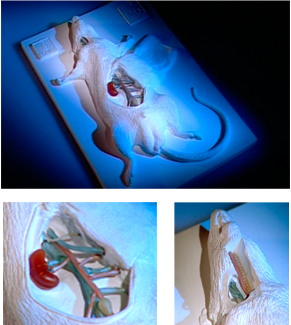 |
From Web site: The Microsurgical Developments PVC-Rat
is developed to master skills in microsurgery
and is an example of the replacement of living animals, one of the main goals of our foundation. … Examples are anastomoses (end-to-end, end-to-side), cannulations and transplantations of vessels and organs.
Available from Microsurgical Developments Foundation.
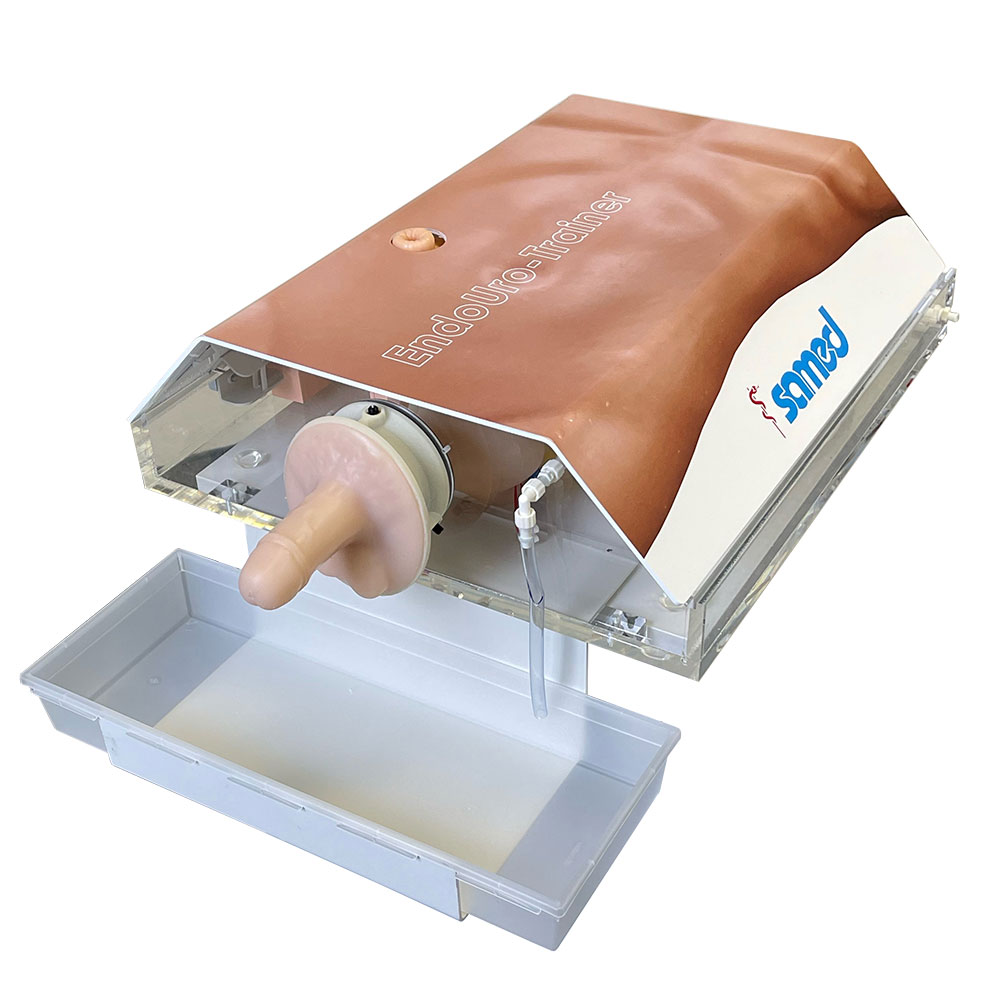 |
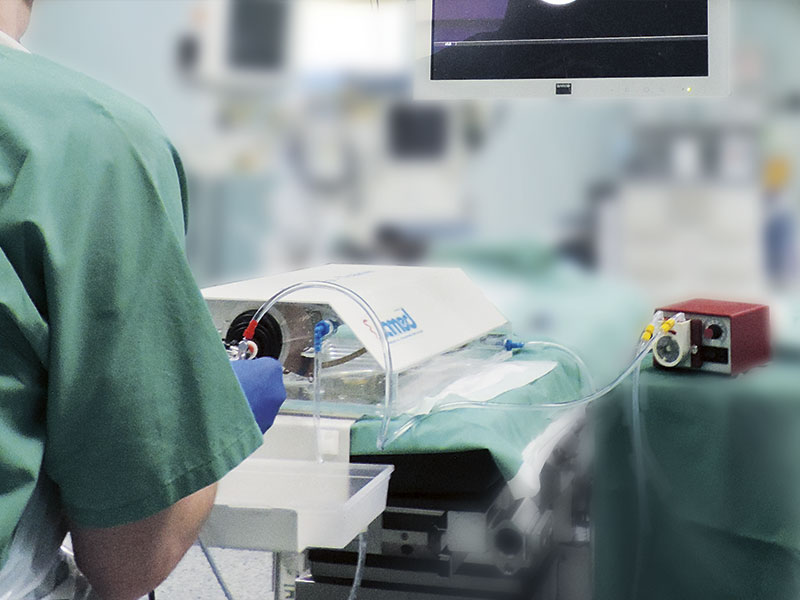 |
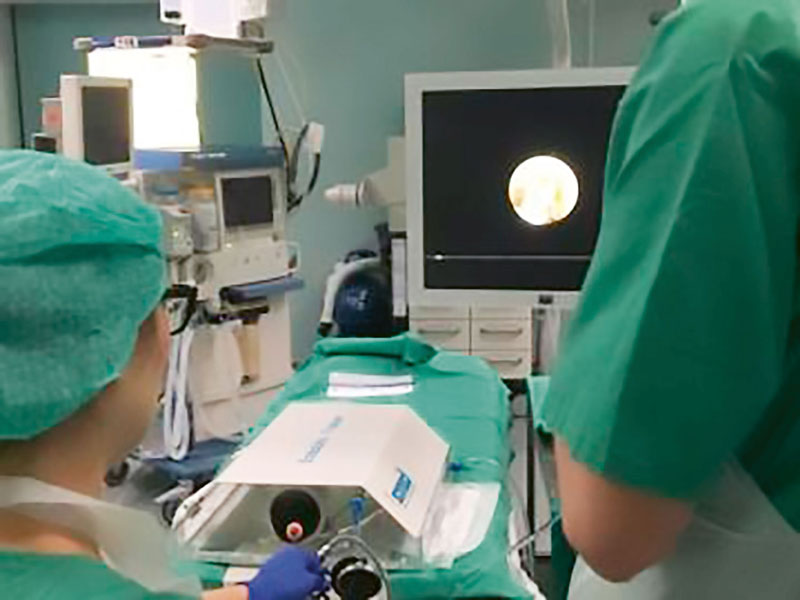 |
From Web site: The EndoUro Trainer enables a realistic learning, training and presentation of a variety of diagnostic and therapeutic tasks in the bladder-ureter-kidney area.
Available from Samed GmbH Dresden.
AccuTouch® Flexible Bronchoscopy Simulator
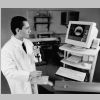 |
Its use and evaluation were reported by Ost et al 2001. Although was used in advanced human medical training, the same principles could be applied to veterinary medical residency training.
Was produced by Immersion Corporation, but currently not listed specifically on their Web site.
PreOp Endoscopy Simulator
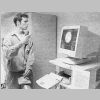 |
Its use and evaluation were reported by Colt et al 2001. Although was used in advanced human medical training, the same principles could be applied to veterinary medical residency training.
Simuldog
 |
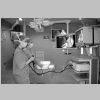 |
 |
Development, use and validation reported in Usón-Gargallo et al 2014.
Canine Laparoscopic Simulator
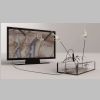 |
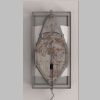 |
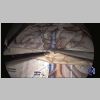 |
Development, use and validation reported in Usón-Gargallo et al 2014.
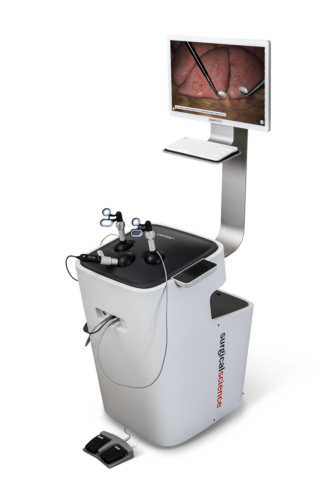 |
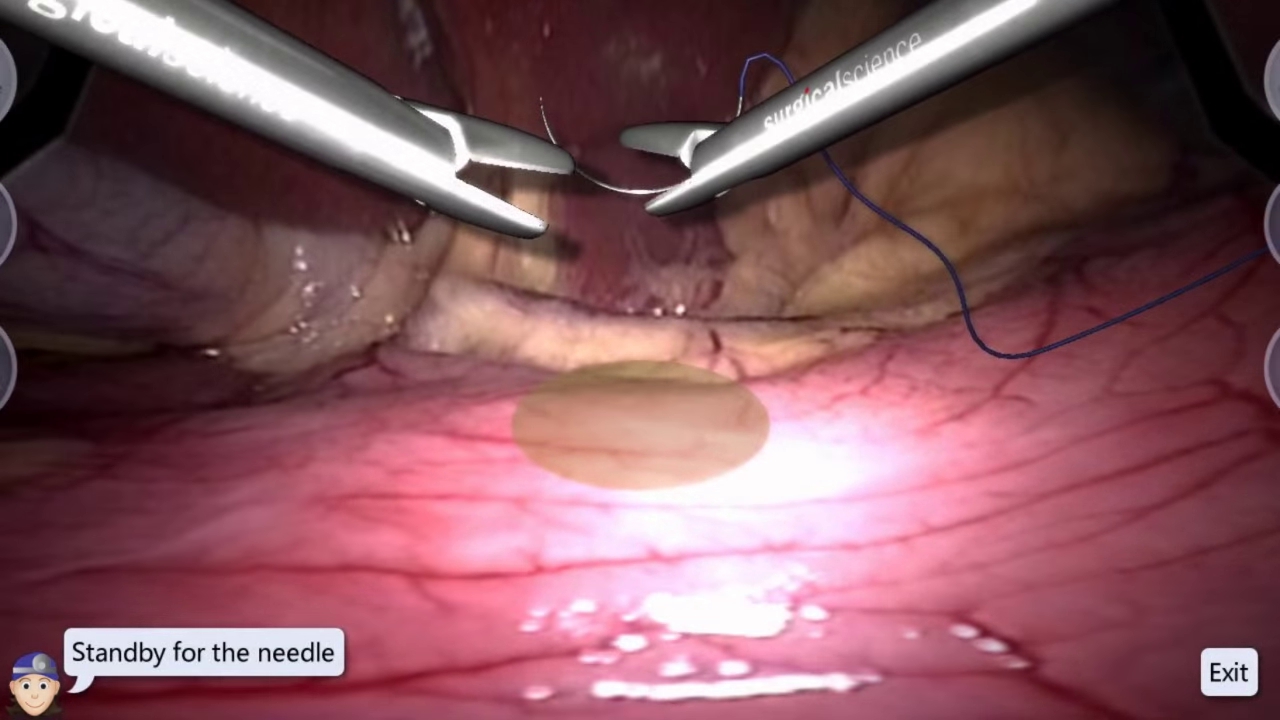 |
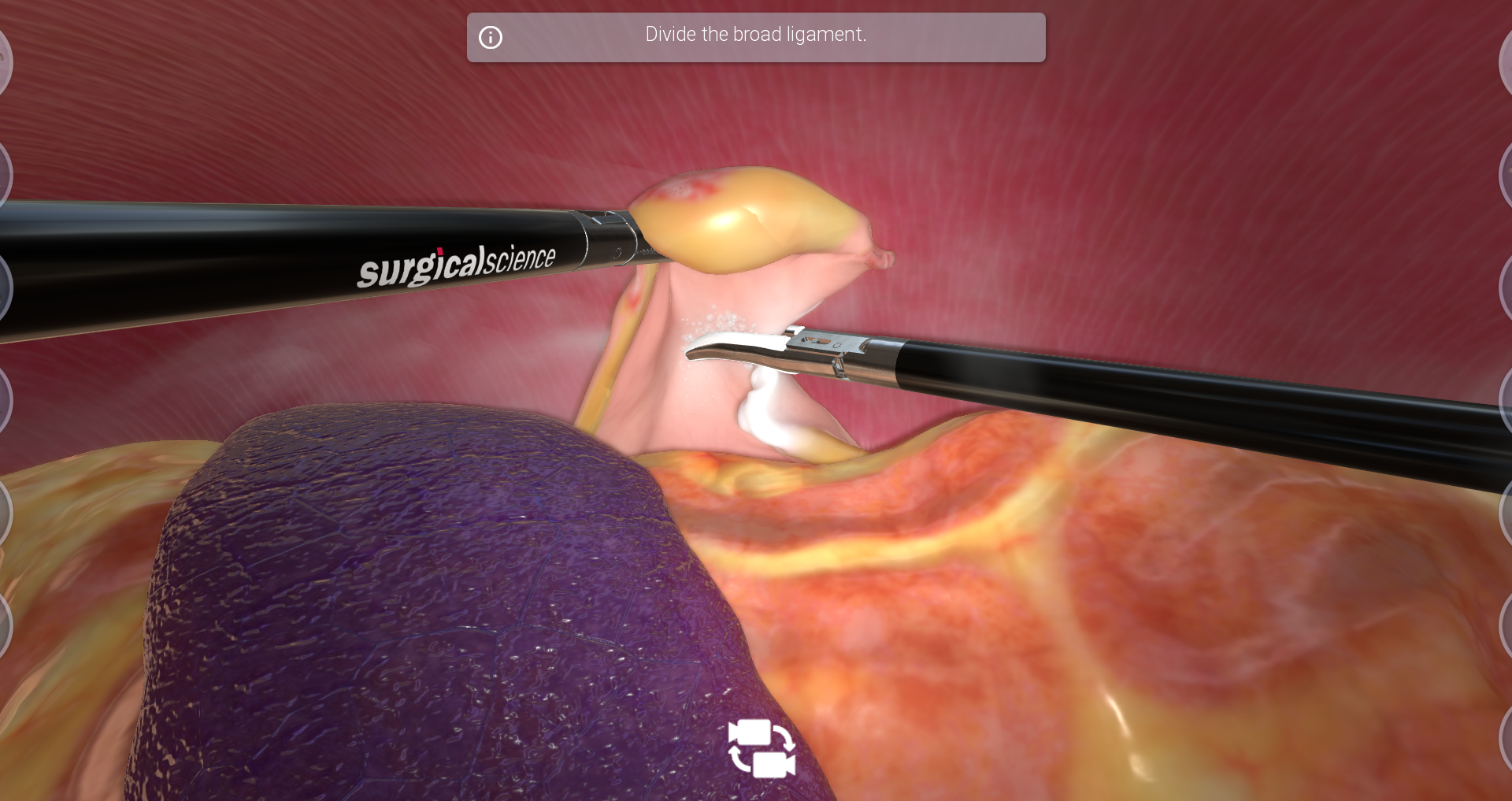 |
From Web site: Virtual reality simulation has shown to deliver a fast and foremost a patient-safe path to technical competence in the operating room.
Pulsating Organ Perfusion Trainer
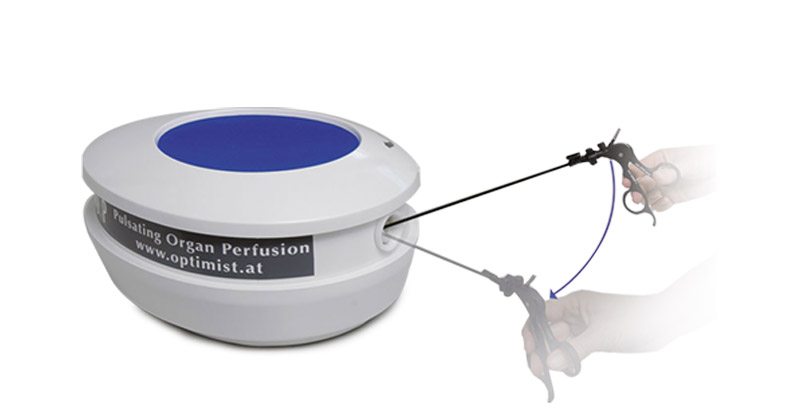 |
 |
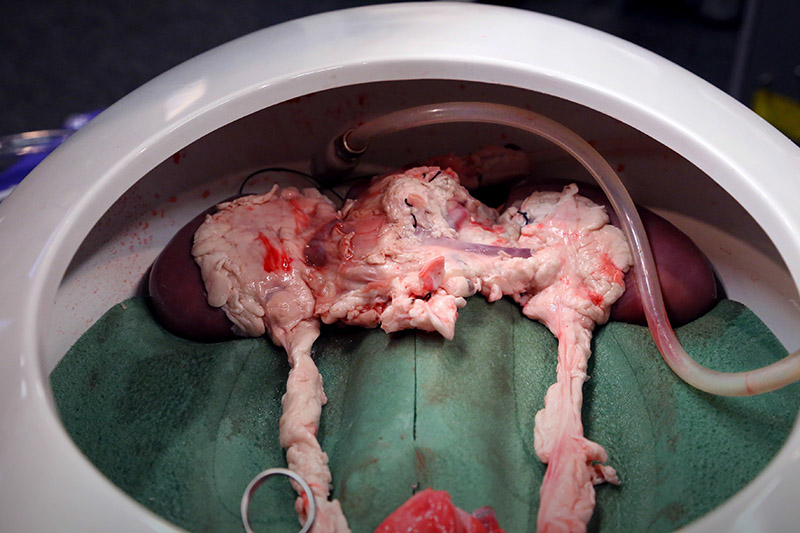 |
Although animal organs are an intended part of the system, these could be ethically-sourced to make this a very effective means of laparoscopy training.
An evaluation of this system was reported by Szinicz et al 1994.
Produced by Optimist GmbH.
Phantom pig abdomen
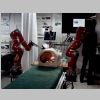 |
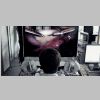 |
Development and use described in Ristolainen et al 2013.
The following includes literature cited above or which is relevant to residency level training. The titles are linked either to a publicly available copy of the document or to a digital object identifier. If there are illustrations which may be publicly viewable, these are also linked, but there is no guarantee that they would be viewable across all platforms.
Arentsen, Juan and Duran, Mario 1976 Stereotaxic device for experimental eye surgery Investigative Ophthalmology 15(1):34-36
The device is used to stabilize enucleated eyes. This could be applied to veterinary medical training, as well.
Colt, Henri G.; Crawford, Stephen W. and Galbraith, Oliver 2001 Virtual reality bronchoscopy simulation: A revolution in procedural training Chest 120(4):1333-1339
 |
 |
 |
A short, focused course of instruction and unsupervised practice using a virtual bronchoscopy simulator enabled novice trainees to attain a level of manual and technical skill at performing diagnostic bronchoscopic inspection similar to those of colleagues with several years of experience. These skills were readily reproducible in a conventional inanimate airway-training model, suggesting they would also be translatable to direct patient care.
Constantian, M.B.; Ehrenpreis. C. and Sheen, J.H. 1987 The expert teaching system: a new method for learning rhinoplasty using interactive computer graphics Plastic and Reconstructive Surgery 79(2):278-283
Could be used for veterinary medical school.
We have developed software that employs interactive computer graphics to simulate the surgical experience of rhinoplasty by allowing the surgeon to experiment within a model of nasal behavior. … We believe that the ability to experiment without risk, to safely learn the biological laws governing nasal behavior, should augment the development of surgical judgement in rhinoplasty.
Filliquist, Barbro; Kapatkin, Amy S.; Vernau, Karen M.; Nakatani, Jamie Y.; Chou, Po-Yen and Ilkiw, Jan E. 2022-12-01 Training Surgical Residents Utilizing an Animal Shelter Fracture Program Journal of Veterinary Medical Education 49(6):778-784
Working relationships between veterinary medical teaching hospitals, animal shelters, and rescue groups are one way to increase veterinary students’ and residents’ hands-on training. The goal of this study is to describe the use of a shelter fracture program to improve the surgical skills of surgical residents. … Surgical resident and student surveys show that this program contributes to their knowledge, skills, and confidence in treating fracture patients. A successful cooperative program provides advanced surgical fracture treatment of shelter animals, improving animals’ quality of life as well as surgical residents’ and veterinary students’ skills training.
Fransson, Boel A.; Ragle, Claude A.; Mickas, Matthew M.; Martin, Kyle W. and Karn, Krystina N.L. 2023-06-01 Ability to Perform Laparoscopic Intra- and Extracorporeal Suture Ligations in a Live Canine Ovariectomy Model after Simulation Training Journal of Veterinary Medical Education 50(3):305-313
 |
 |
 |
 |
 |
Extensive simulation training including suturing may contribute toward surgery residents being able to perform complex laparoscopic procedures.
Greenhalgh, R.M.; Eastcott, H.H.; Mansfield, A.O. and Taylor, D.E. 1987 Aneurysm jig for anastomosis technique Annals of the Royal College of Surgeons of England 69(5):199-200
 |
 |
 |
 |
 |
 |
Although emphasis is on human surgery training, the principle could be applied to veterinary medical school (alternative).
Hikichi, Taiichi; Yoshida, Akitoshi; Igarashi, Syo; Mukai, Nobuhiko; Harada, Masayuki; Muroi, Katsunobu and Terada, Takafumi 2000 Vitreous surgery simulator Archives of Ophthalmology 118(12):1679-1681
 |
 |
Jabbour, Noel; Reihsen, Troy; Sweet, Robert M. and Sidman, James D. 2011 Psychomotor skills training in pediatric airway endoscopy simulation Otolaryngology–Head and Neck Surgery 145(1):43-50
 |
 |
 |
Although involves human medical residency, principles are applicable to veterinary medical residencies.
Simulation-based subtask training shows promise as an effective and reproducible method to teach the complex psychomotor task of airway foreign body retrieval. Completion of the curriculum led to a significant improvement in residents’ confidence in and ability to perform bronchoscopic foreign body retrieval in an infant airway mannequin.
Kishore, Thekke Adiyat; Beddingfield, Richard; Holden, Timothy; Shen, Yunhe; Reihsen, Troy and Sweet, Robert M. 2009 Task deconstruction facilitates acquisition of transurethral resection of prostate skills on a virtual reality trainer Journal of Endourology 23(4):665-668
Although is for advanced training in the human medical field, the principles are applicable to veterinary surgical training.
For the acquisition of transurethral resection skills, task deconstruction is superior to full-task training alone, in training novices on the virtual reality TURP trainer. Such a study provides more validity evidence to the unique value of simulation in the urology minimally invasive curriculum.
Lee, Sun and Coppersmith, Ward J. 1983-01-01 A microvascular surgical practice disc for beginners Microsurgery 4(1):67-69
Could be used for veterinary medical school (alternative).
Leighton, Barbara L. 1989 A greengrocer’s model of the epidural space Anesthesiology 70(2):368-369
Discusses design of simple simulator for cerebrospinal punctures. Although aimed at human medical residencies, principles are applicable to veterinary medical residencies.
Leopold, Seth S.; Morgan, Hannah D.; Kadel, Nancy J.; Gardner, Gregory C.; Schaad, Douglas C. and Wolf, Fredric M. 2005 Impact of educational intervention on confidence and competence in the performance of a simple surgical task The Journal of Bone and Joint Surgery. American Volume 87(5):1031-1037
Although involved graduate doctors of human medicine, the principles might apply to veterinary medical residency situations.
McCool, Katherine E.; Bissett, Sally A.; Hill, Tracy L.; Degernes, Laurel A. and Hawkins, Eleanor C. 2020 Evaluation of a human virtual-reality endoscopy trainer for teaching early endoscopy skills to veterinarians Journal of Veterinary Medical Education 47(1):106-116
 |
The VRET [virtual-reality endoscopy trainer] was less stressful for participants than the LDL [live dog laboratory] (p = .02). All participants found that the VRET was a useful and acceptable alternative to the LDL for training of early endoscopy skills. Based on this limited study, VRET can serve as a reasonable alternative to LDL for teaching endoscopy skills to veterinarians.
McCool, Katherine E.; Marks, Steven L. and Hawkins, Eleanor C. 2022-08-01 Endoscopy Training in Small Animal Internal Medicine: A Survey of Residency Training Programs in North America Journal of Veterinary Medical Education 49(4):515-523
The survey identified topics for classroom sessions and several inexpensive physical models, rated very or extremely helpful, that would be suitable for programs with limited budgets. A human-based virtual reality simulator was also rated highly by two programs.
Ng, Zhi Yang; Honeyman, Calum; Lellouch, Alexandre G.; Pandya, Ankur and Papavasiliou, Theodora 2021-12-15 Smartphone-Based DIY Home Microsurgical Training with 3D Printed Microvascular Clamps and Japanese Noodles European Surgical Research 64(2):301-303
 |
The perceived advantages of this model are numerous. Not only does it comply with the 3Rs of simulation-based training, it can also reduce the associated costs of training by up to a hundred-fold or more when compared to a traditional rat course, and potentially, be extended to low-middle income countries (LMICs) without routine access to microsurgical training for capacity development. That it can be utilised remotely also bodes well with the current limitations on face to-face training due to COVID restrictions and lockdowns.
Ost, David; DeRosiers, Andrew; Britt, E. James; Fein, Alan N.; Lesser, Martin L. and Mehta, Atul C. 2001 Assessment of a bronchoscopy simulator American Journal of Respiratory and Critical Care Medicine 164(12):2248-2255
 |
 |
Is about the AccuTouch Flexible Bronchoscopy Simulator by Immersion Medical.
Training new fellows on the bronchoscopy simulator leads to more rapid acquisition of bronchoscopy expertise compared with conventional training methods. This technology has the potential to facilitate bronchoscopy training and to improve objective evaluations of bronchoscopy skills.
Pandey, Suresh K.; Werner, Liliana; Escobar-Gomez, Marcela; Visessook, Nithi; Peng, Qun and Apple, David J. 2000 Creating cataracts of varying hardness to practice extracapsular cataract extraction and phacoemulsification Journal of Cataract and Refractive Surgery 26(3):322-329
They describe a technique to make the lens harder (to simulate aging) in human postmortem eyes which are then used for practicing lensectomies. A similar approach could be used for eyes taken from veterinary patients who have died.
Perry, Richard E. 2009 Laying the foundation of surgical skills for trainees (Residents) ANZ Journal of Surgery 79(3):122-126
Although is for human medical residency programs, principles are applicable to veterinary medical residencies.
The skills laboratory offers an opportunity to better prepare residents for their clinical rotations and to accelerate their clinical effectiveness.
Raj, Diana; Williamson, Roy M.; Young, David and Russell, Douglas 2013 A simple epidural simulator: A blinded study assessing the ‘feel’ of loss of resistance in four fruits European Journal of Anaesthesiology 30(7):405-408
Although was for human medical residents and graduates, the principles are applicable to veterinary medical residencies and similar.
The banana is a cheap and easily available training tool to introduce novice anaesthetists to the feel of loss of resistance, which is best experienced before the first insertion of an epidural in a patient.
Ramasastry, Sai; Narayanan, Krishna and Angel, Michael F. 1985 A simple and inexpensive device for microvascular training Annals of Plastic Surgery 14(5):462-464
They used Parafilm® and plastic vials. Could be used for veterinary medical school.
Remie, René 2001 The PVC-Rat and other alternatives in microsurgical training Lab Animal 30(9):48-52
Ristolainen, Asko; Colucci, Gianluca and Kruusmaa, Maarja 2013 A phantom pig abdomen as an alternative for testing robotic surgical systems: Our experience Alternatives to Laboratory Animals 41(5):359-367
Although is in the context of testing surgical innovations, no reason why could not be used in an educational setting.
The phantom pig abdomen was developed from computed tomography scans by using affordable materials…The phantom pig abdomen has proven to be a realistic tool, with the potential to reduce the cost and time-frame of the experiments.
Roe, Simon C. 2023-12-01 Real-Time Feedback to Enhance the Teaching of Wire Tying Journal of Veterinary Medical Education 50(6):636-639
In this paper, a device is described that can provide real-time feedback on wire tension generated during knot tying, and how particular knots resist an applied distraction. This device has been used to deliver a live demonstration to reinforce lecture material, and in small group teaching exercises, where real-time feedback enhances skills and understanding. A stepwise training schedule for surgery residents structured as an entrustable professional activity is proposed.
Schöffl, Harald; Froschauer, Stefan M.; Dunst, Karin M.; Hager, Dietmar; Kwasny, Oskar and Huemer, Georg M. 2008 Strategies for the reduction of live animal use in microsurgical training and education Alternatives to Laboratory Animals 36(2):153-160
Some of their examples involve dead animals or organs from them.
Thus, it is currently possible to provide excellent and in-depth training in microsurgical techniques, even when the number of live animals used is reduced to a minimum. With these new and innovative techniques, trainees are able to learn and prepare themselves for the clinical situation, with the sacrifice of considerably fewer laboratory animals than would have occurred previously.
Senior, Michael A.; Southern, Stephen J. and Majumder, Sanjib 2001 Microvascular simulator – a device for micro-anastomosis training Annals of the Royal College of Surgeons of England 83(5):358-360
 |
 |
 |
They used a microvascular simulator and blood vessels collected from human placentas (and other sources).
Szinicz, Gerhard; Beller, Siegfried; Zerz, Andreas and Bodner, Winfried 1994 Die Pulsierende Organ-Perfusion als Möglichkeit zur Reduktion von Tierversuchen in der Ausbildung in minimal invasiven Operationstechniken ALTEX 11(1):40-43
English title: The Pulsatile Organ Perfusion – a chance to reduce animal experiments in minimally invasive surgery training
Tapia-Araya, Angelo E.; Usón-Gargallo, Jesús; Enciso, Silvia; Pérez-Duarte, Francisco J.; Martin-Portugués, Idoia Díaz-Güemes; Fresno-Bermejo, Laura and Sánchez-Margallo, Francisco M. 2016 Assessment of laparoscopic skills in veterinarians using a canine laparoscopic simulator Journal of Veterinary Medical Education 43(1):71-79
 |
 |
The CLS and its training program demonstrated content and construct validity, supporting the suitability of the simulator for training and teaching and its ability to distinguish the degree of experience in laparoscopic surgery among veterinarians. In addition, face validity showed that the veterinarians fully accepted the CLS’s usefulness for learning basic laparoscopic skills.
You may be able to obtain a copy of the paper from: ResearchGate
Usón-Gargallo, Jesús; Usón-Casaús, Jesús M.; Pérez-Merino, Eva M.; Soria-Gálvez, Federico; Morcillo, Esther; Enciso, Silvia and Sánchez-Margallo, Francisco M. 2014 Validation of a realistic simulator for veterinary gastrointestinal endoscopy training Journal of Veterinary Medical Education 41(3):209-217
 |
 |
 |
 |
 |
 |
 |
This article reports on the face, content, and construct validity of a new realistic composite simulator (Simuldog) used to provide training in canine gastrointestinal flexible endoscopy. The basic endoscopic procedures performed on the simulator were esophagogastroduodenoscopy (EGD), gastric biopsy (GB), and gastric foreign body removal (FBR). … Simuldog is the first validated model specifically developed to be used as a training tool for endoscopy techniques in small animals.
Usón-Gargallo, Jesús; Tapia-Araya, Angelo E.; Díaz-Güemes Martin-Portugués, Idoia and Sánchez-Margallo, Francisco M. 2014 Development and evaluation of a canine laparoscopic simulator for veterinary clinical training Journal of Veterinary Medical Education 41(3):218-224
 |
 |
 |
 |
 |
The Canine Laparoscopic Simulator (CLS) for laparoscopic training was developed based on the working and optical space obtained from computed tomography (CT) scan images of three Beagle dogs. … They perceived it to be a good training tool, and these results suggest that CLS is an engaging tool for education but still has some limitations inherent in training boxes. Further studies would be needed to establish the validity of training programs performed in the CLS.
You may be able to obtain a copy of the paper from: ResearchGate
Weidenthal, Daniel T. 1987 The use of a model eye to gain endophotocoagulation skills Archives of Ophthalmology 105(8):1020
Discusses use of the MIRA practice eye for developing dexterity in preparing for endophotocoagulation.
Whitacre, Marc M. and Mainster, Martin A. 1987 Photographic slides for teaching laser photocoagulation American Journal of Ophthalmology 103(4):590-591
Standard 35 mm slides (the material, not the pictures) were used to teach laser burn methods.
Residents are considered ready to begin performing panretinal photocoagulation under strict staff supervision when they have satisfactorily completed the practice slide set and demonstrated their understanding of the use of photocoagulators and wide-angle inverted image ophthalmoscopic contact lenses.
Zeimer, Ran C. and Mori, Marek T. 1988 An interactive model eye for use with ophthalmic instruments Archives of Ophthalmology 106(1):126-127
Discusses use of an artificial eye for developing dexterity in advanced ophthalmic surgical procedures.
Updated 2024-01-16
